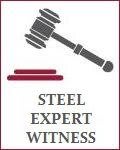History of the Celsa Steel Group 
In 2022, we estimate that Celsa produced ~5.4 million tonnes (mt) of liquid steel, and consumed almost 7 million tonnes of ferrous scrap. Principal melt shop and rolling mill operations are all located in Europe. The main production facilities as at Q1 2024 are in Spain, France, Norway, Poland and the UK.
The timeline below covers the history of the firm.
- 1967: Celsa founded in Barcelona as a steel re-rolling mill in Castellbisbal.
- 1977: EAF melt shop built in Castellbisbal, Barcelona.
- 1987: Acquires Nervacero melt shop and rolling mill in Bilbao.
- 1987: Acquires Global Steel Wire (GSW) Santander plant.
- 1987: Celsa Barcelona acquires Torras Herrerías y Construcciones (THC).
- 1991: Acquires wire drawing businesses of Tycsa PSC and Trefilerías Moreda.
- 1999: Acquires Moreda Riviere Trefilerias wire drawing plant.
- 2003: Establishes Trefilados Quijano wire drawing business.
- 2003: Celsa UK established in Cardiff as leading UK EAF-based rebar supplier.
- 2003: Acquires Huta Ostrowiec in Poland.
- 2004: New EAF melt shop built in Barcelona.
- 2006: New melt shop constructed in Cardiff.
- 2006: Celsa Nordic established as top rebar supplier in Norway.
- 2007: Purchase of 52% stake in Macon Bergen, Norway.
- 2007: Acquires Acierie de Atlantique in France.
- 2007: New EAF melt shop built in France at Bayonne.
- 2007: New 700 kt / year bar mill commissioned at Ostrowiec in Poland.
- 2008: Celsa Steel Service AS acquires Nordic rebar business of Ruukki Forge.
- 2008: Acquires BRC cut and bend steel fabrication business in the UK.
- 2009: Celsa UK achieves certification to the Eco-Reinforcement Standard.
- 2014: Acquires Tammet Oy Mesh in Finland.
- 2014: Established Celsa Steel Services in Spain.
- 2015: New steel wire mesh plant built at Mo i Rana in Norway.
- 2015: Celsa France given 'Suststeel' sustainability award by Eurofer.
- 2016: Sells land in Santander to Ratisbona for €1.1m.
- 2019: Fined GBP £1.8m after two engineers died in explosion at Cardiff Steelworks.
- 2020: Receives approval for investment in UK scrap processing plant.
- 2020: Gets GBP £30m emergency Covid loan from UK government, saving 1800 jobs.
- 2020: Celsa Huta Ostrowiec acquires Polish steel fabricator Stal-Service.
- 2020: Granted moratorium on convertible debt repayments by Madrid Court.
- 2021: Commissions 550 kt / year Russula wire rod factory in Bayonne in France.
- 2022: Euro 280m Barna Steel rescue package approved by European Commission.
- 2023: Celsa Nordic Recycling acquires Boberg Recycling in Karlshamn, in Sweden.
- 2023: Creditors given court go-ahead to take control of Celsa steel group.
- 2023: Undertakes major restructuring of €2.7 billion group debt in November.
- 2024: Celsa’s Spanish service centres obtain Aenor’s sustainable certification award.
- 2024: Press reports mention potential sale of steel subsidiaries in Poland, Norway and UK.
- 2024: Celsa Steel UK adds 300 kt/year scrap shredding plant in Wales.
- 2024: Announces plans for investment of €166m for EBITDA improvements.
- 2024: Sells British and Norwegian steel mills to Sev.en GI.
Notes
- 1987: The name CELSA is an acronym of the original company name Compañía Española de Laminación S.A.
- 1987: Acquisition of Nervacero established Celsa as the largest Spanish producer of rebar.
- 1987: Global Steel Wire S.A. specialises in the manufacture of high quality wire rod and, through its wire drawing mills in the production of high quality steel wire. GSW has its own port, offering logistical advantages.
- 1987: Torras Herreria y Construcciones (THC) was a metal fabrication business founded in 1878 in Barcelona by architect Juan Torras.
- 1991: Tycsa PSC is the world leader in the production of high elastic limit steel wires and cords for the construction industry.
- 1999: Moreda Riviere Trefilerias (MRT) is a leading Spanish producer of steel fencing wire.
- 2003: Trefilados Quijano is a supplier of high carbon wire for the production of mattress and upholstery springs.
- 2003: UK investment was based on Celsa takeover of Cardiff-based Allied Steel and Wire (ASW). ASW went into receivership in July 2002, blaming the strong pound and a flood of cheap imports.
- 2003: Investments in Cardiff in the UK and in Ostrowiec in Poland were Celsa's first steps in the internationalisation of the business.
- 2003: Note that origins of Poland's Huta Ostrowiec go back to 1813, when a small blast furnace was installed for the production of iron forgings (less than 100 tons / year). Blast furnace production then expanded to ~77 kt / year by 1915. Production of railway wagons commenced in 1921. Production switched to artillery shells, submarine castings, torpedo components and wheels for the automotive sector in the 1950s. After installation of a USSR-supplied 140t EAF in 1970, and several further EAFs from the USSR in 1975, steel output volume rapidly increased, exceeding 750 kt / year by the early 1980s. Despite restructuring efforts in the 1990s, Huta Ostrowiec declared bankruptcy in July 2002.
- 2006: Origins of rebar production in Norway go back to 1946, when the Norwegian State-owned firm Norsk Jernverk started production at Mo i Rana. Norsk Jernverk was later renamed Norsk Jern Holding, and taken over by Rautaruukki of Finland.
- 2006: Celsa Nordics comprises CELSA Armeringsstål, which operates a smelter and a rebar rolling mill located in Mo i Rana; as well as cut and bend companies operated by CELSA Steel Service in Norway, Sweden, Finland and Denmark.
- 2007: Celsa's 2007 investment in a new bar mill at Ostrowiec in Poland coincided with investment by Poland’s Huta Warszawa in ~600 kt / year of bar capacity, and with CMC Zawiercie's investment in Poland in a new 0.7mt/year rebar mill.
- 2007: Macon Bergen activities centred on the distribution of bent and welded reinforeement steel products. The firm also traded in reinforcement spacers, wire mesh and other associated products.
- 2007: The acquisition by Celsa of Acierie de Atlantique followed the 2004 sale of these assets by Arcelor to the Galician Group Anon. (The Arcelor sale reflected the firm's strategy at that time to divest itself of its long product assets).
- 2008: Celsa also acquired the steel fabrication assets of ROM Group and of Express Reinforcements around the same time that it acquired BRC. (BRC itself - the UK's largest supplier of steel reinforcement and associated products for concrete - was founded in 1908). All three firms produce concrete reinforcement produts from steel reinforcing bar. BRC and ROM also manufacture steel mesh from wire rod. [BRC was acquired in September 2008 from Acertec plc. Express Reinforcements was purchased from Ash & Lacy Services Limited, a subsidiary of Hill & Smith Holdings plc, in November 2008]. Today, BRC Limited, ROM Group and Express Reinforcements Ltd are organised under the umbrella of Celsa Steel Service UK.
- 2009: Eco-Reinforcement is an independent, third-party certification scheme designed to enable reinforced steel products to be assessed and certified as being responsibly and/or ethically sourced.
- Tammet Oy Mesh is a manufacturer of mesh and netting products. CELSA Group, through its subsidiary company Celsa Steel Service Finland, acquired the business of the company Tammet Oy Mesh and its plant in the town of Pälkäne, including all machinery and equipment.
- 2014: Celsa Steel Services Spain offered a range of reinforcing concrete solutions to clients, including design work, roduct handling, and digital support.
- 2016: Sale agreement was for parcel of land owned by subsidiary Global Steel Wire (GSW). The land was assigned for non-industrial use and had an area of 3,167 m2.
- 2019: An HSE investigation found that a flammable atmosphere had developed within an accumulator as hydraulic lubrication oil was drained. The flammable atmosphere was ignited by an electric heater within the accumulator. The investigation found that the company had failed to undertake a proper risk assessment for this procedure.
- 2020: Celsa Steel UK was granted planning approval in August 2020 to build a new shear processing plant at a scrapyard in Rotherham. This would allow the firm to process 75,000 t/yr of ferrous scrap.
- 2020: Celsa reportedly breached a 4x leverage ratio covenant in Q2 2020. The Spanish moratorium order allowed the company to postpone debt payments for a year.
- 2020: Polish fabricator Stal-Service sp. z o.o. was purchased from construction company Porr. Stal-Service is located on the northern outskirts of Warsaw and can produce up to 90,000 tonnes/year of construction reinforcement and 10,000 tonnes / annum of prefabricated construction elements. The fabrication business sells mainly to the domestic market (e.g. construction reinforcement for large infrastructure projects such as motorways); but also to clients in Sweden, Norway and the Czech Republic.
- 2021: Prior to this point, Celsa France only had the capability to produce billets at Bayonne. Long products produced by Celsa France are to be distributed across France, Belgium and the Netherlands by Intersig France (a subsidiary of Netherlands-based Van Merksteijn International).
- 2022: Barna Steel S.A is the holding company of Celsa Spain. The EC in 2022 approved a €280 million loan to Barna Spain as a Covid-19 financial support measure (State Aid).
- 2023: Key Celsa creditors included Deutsche Bank, Attestor, Anchorage, GoldenTree, Goldman Sachs and Strategic Value Partners (SVP).
- 2023: All ferrous scrap collected by Celsa Nordic Recycling (including that at Boberg Recycling) is delivered to the melt shop at Celsa Armeringsstål in Mo i Rana, Norway.
- 2023: Financial restructuring saw group debt reduced by €1.29 billion. The refinancing transaction involved a debt-for-equity swap of the entire convertible debt and 15% of the jumbo debt into 100% of Celsa’s shares, and the extension of remaining debt maturities by five years. Restructuring also involved loss of control over the business by the Rubiralta family.
- 2024: Spanish authority Asociación Española de Normalización y Certificación (Aenor) awarded three Celsa service centres a sustainability award in January 2024. The service centres in question included the Illescas facility in Castilla–La Manch, Barcelona-based Castellbisbal and Seville’s Dos Hermanas.
- 2024: Consulting firm Bain & Company was appointed early in 2024 to assist with formulation of a new strategic plan for Celsa; whilst Citi was reportedly appointed also to work with Celsa on potential foreign divestments.
- 2024: New cutting-edge shredder with advanced magnetic separation technology - located near the Cardiff plant - is equipped with a 3-megawatt motor that allows for ferrous scrap input at 130 metric tons per hour.
- 2024: Celsa EBITDA improvement or 'value creation' plan - jointly developed with consulting advisors from Bain & Company - is intended to improve the company's competitiveness in areas such as sales, logistics, purchasing, and production.
- 2024: Se.ven GI is a Czech investment fund owned by billionaire Pavel Tykač.
For further insights into Celsa facilities [manufacturing locations, plant ages, and production capacities], or report on competitors or cost competitiveness, please contact us at info@steelonthenet.com.
Back to Knowledge Base Index
© 2001 -
2024 Steelonthenet.com. All rights reserved.
To contact us about the history of the Celsa Steel Group please email info@steelonthenet.com.
To contact us about the history of the Celsa Steel Group please email info@steelonthenet.com.








